What you need to know about language inclusion
Unlocking the potential of inclusion - mother language solutions
International Mother Language Day has its origins in Bangladesh, where years ago the Bengali (or Bangla) Language Movement called to recognize and respect the community’s linguistic and cultural rights. Today the mother language initiative has evolved into UNESCO’s global celebration of ‘cultural and linguistic diversity for sustainable societies.’
In Bangladesh now, over 900,000 Rohingya people find refuge in Cox’s Bazar’s camps. Having fled Myanmar, they face a multitude of challenges to their health, wellbeing, and education. Massive humanitarian efforts aim to protect the Rohingya community’s human rights and provide aid with respect and dignity. But detrimentally, our evidence shows that the Rohingya language has long been overlooked.
This blog explains why speaking someone’s mother language does more than make you feel at home. Including mother languages lets us unlock the full potential of sustainable humanitarian and development projects globally. Four billion people speak a marginalized language, and their voices deserve to be heard.
International Mother Language Day has its origins in Bangladesh, where years ago the Bengali (or Bangla) Language Movement called to recognize and respect the community’s linguistic and cultural rights. Today the mother language initiative has evolved into UNESCO’s global celebration of ‘cultural and linguistic diversity for sustainable societies.’
In Bangladesh now, over 900,000 Rohingya people find refuge in Cox’s Bazar’s camps. Having fled Myanmar, they face a multitude of challenges to their health, wellbeing, and education. Massive humanitarian efforts aim to protect the Rohingya community’s human rights and provide aid with respect and dignity. But detrimentally, our evidence shows that the Rohingya language has long been overlooked.
This blog explains why speaking someone’s mother language does more than make you feel at home. Including mother languages lets us unlock the full potential of sustainable humanitarian and development projects globally. Four billion people speak a marginalized language, and their voices deserve to be heard.
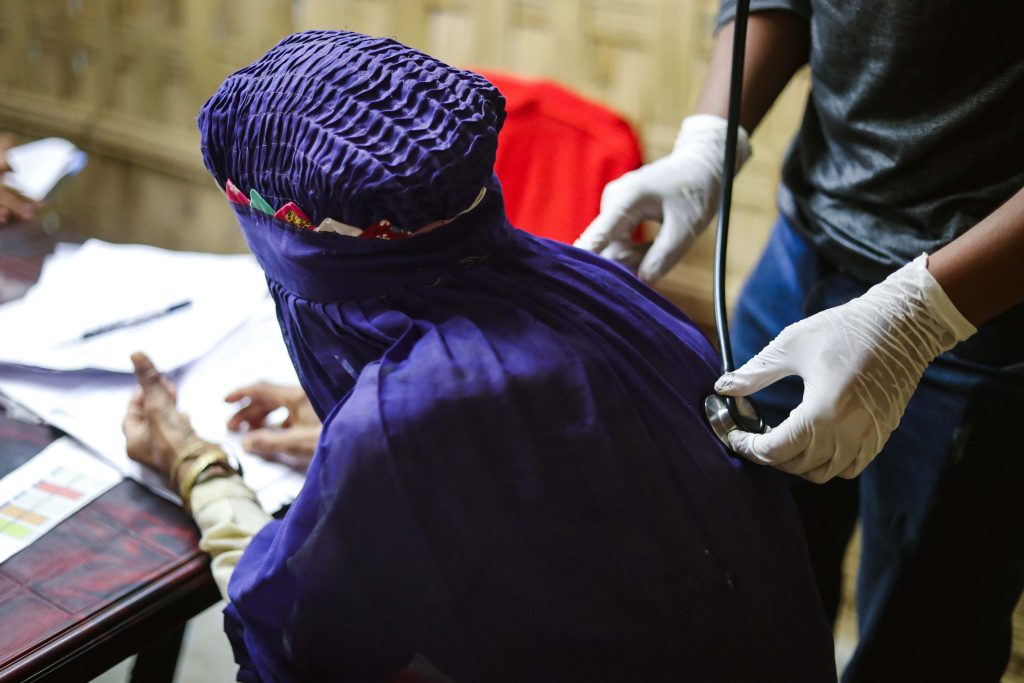
Language inclusion is the key to sustainable change
We’ve found that for Rohingya people who face exclusion, language and communication barriers exacerbate existing challenges to essential healthcare, safety, shelter and more. The impacts of exclusion are widespread and disproportionately affect vulnerable and already-excluded groups, older people, women, children, people with disabilities, and those with low literacy levels.
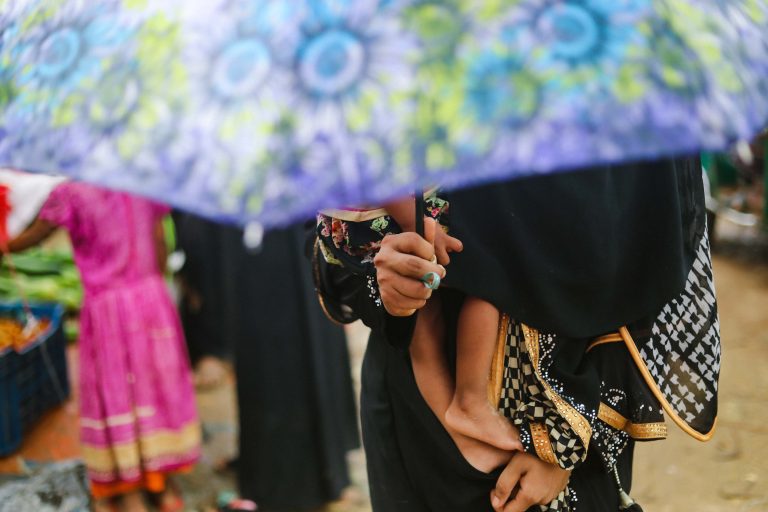
This exclusion echoes all around the world – every day, people cannot access life-changing information and opportunities because of the language they speak.
Awareness is growing
Language plays a vital role in sustainable development. And there’s evidence that it’s working. Six years ago, evidence from TWB first highlighted language challenges, miscommunication and false assumptions about the Rohingya community’s comprehension of local languages. We’ve distributed guidance on communicating in the Rohingya language on key topics such as health, gender, and disability to strengthen responders’ capacity to translate in an effective and culturally acceptable way. Since 2020, our Bangladesh country program has trained 1,400 humanitarians to understand and support the language needs of the Rohingya community. Now, in Cox’s Bazar’s refugee camps, research shows that communication practices to reach excluded groups have become more widespread, and they’re more in line with people’s needs and preferences. That said, we can’t stop there. There is still progress to be made to ensure sustainable, inclusive communication practices, especially for marginalized groups.
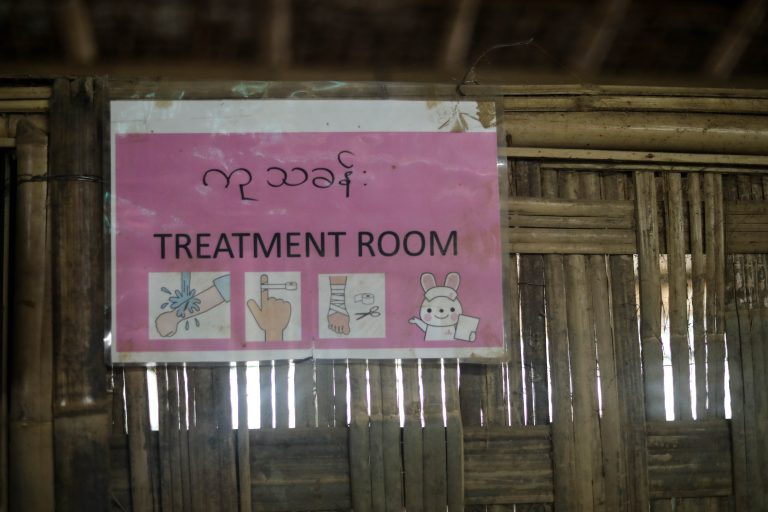
In a 2022 study, 74% of respondents said their organization still uses Chittagonian-speaking staff for day-to-day communication with Rohingya. Not using the community’s mother language for important and sensitive conversations presents challenges, particularly for the most marginalized:
“Most NGO staff use Chittagonian, which is spoken in the Cox’s Bazar area and is close to the Rohingya language. But it is not close enough to avoid misunderstandings. Many camp residents, especially older people and children do not fully understand Chittagonian. That can be particularly damaging when it comes to topics like SRH (sexual and reproductive health) and GBV (gender-based violence).”
– NGO volunteer and former sexual and reproductive health practitioner, 2022
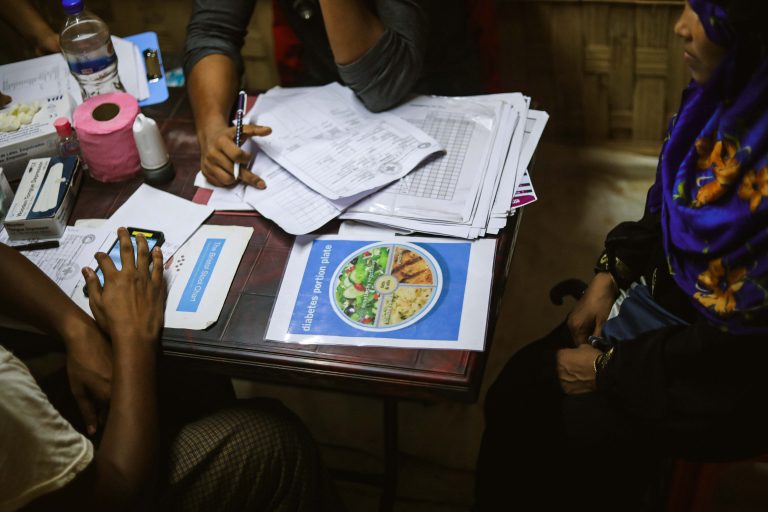
“As I have a disability and hearing problems, it is especially hard for me to explain my health conditions properly. There is no one in the consulting room to explain to me. The doctor just pretends to listen to my problem seriously.”
– 60-year-old Rohingya man, 2022
Why embracing language diversity is the key to inclusion
Our language data and maps, including community-informed analysis of language use, are among our most in-demand services. They’re being used around the globe. This means humanitarian and international development organizations are increasingly planning their program communications around concrete data, rather than assumptions about who speaks national or regionally dominant languages. When we speak someone’s language, we can facilitate more effective communication and dialogue across cultures.
Now at the forefront of language technology for social good, CLEAR Global aims to transform communication and shift power structures with our inclusive solutions. Our nonprofit organization bridges the communication gap and empowers marginalized language communities to access vital information, services, and opportunities, and make their voices heard. Read on to learn how CLEAR Global creates channels for communication in the mother languages people use – including more marginalized language speakers in critical conversations.
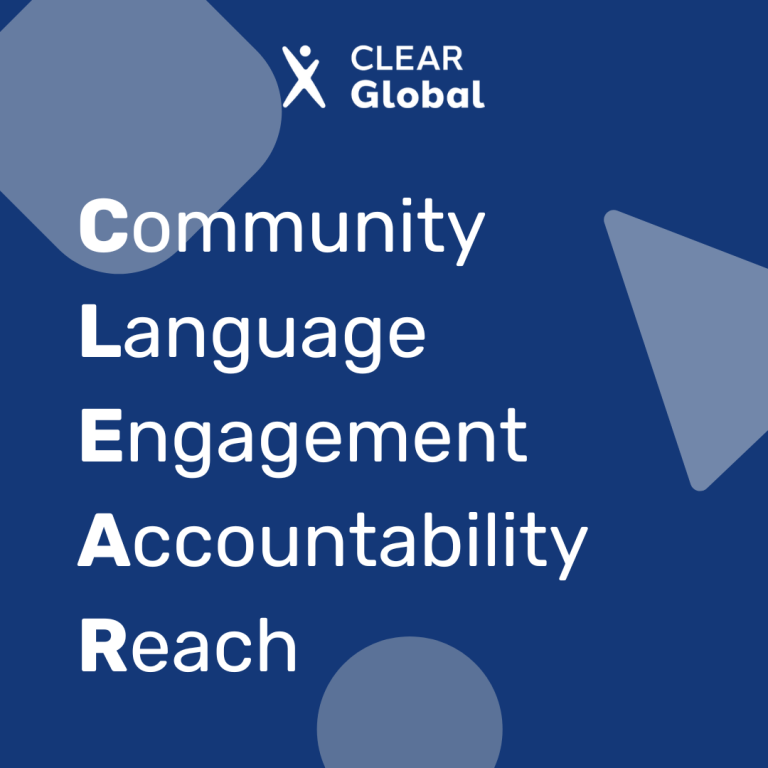
Why is mother language inclusion vital?
As much as 90% of the population in some parts of the world still do not have access to education in a language they speak or understand. Increasing numbers of children face migration and displacement, making language inclusion critical for their futures. What’s more, inequality is growing for more than 70% of the global population. Too many people face exclusion which is detrimental to their education, health, and livelihood opportunities, because of the language they speak.
Sustainable development – meeting global goals
In our decades working at the intersection of language and humanitarian aid, we’ve seen evidence that language exclusion is a barrier to effective humanitarian action. People displaced by conflict in Nigeria are affected, as are those rebuilding their lives in the aftermath of earthquakes in Türkiye and Syria, and millions more around the world. Good communication is not just an ideal. It has practical and emotional implications, as language barriers affect people’s sense of trust, safety and social cohesion. Recognizing language diversity is critical to making urgent humanitarian programs and services accessible and reducing risks to vulnerable groups.
Language inclusion means recognizing linguistic diversity, respecting it, and promoting multilingualism to ensure no one is left behind. At CLEAR Global, it’s our mission’s core: ensuring people can get vital information and be heard, whatever language they speak. And it’s essential for achieving the Sustainable Development Goals (SDG) 2030 Agenda. This call to action by all UN Member States aims to “end poverty, protect the planet and improve the lives and prospects of everyone, everywhere.” By promoting language inclusion, we’re taking steps toward a more inclusive and equitable world where people who face challenges can get the information and support they need, whatever language they speak.
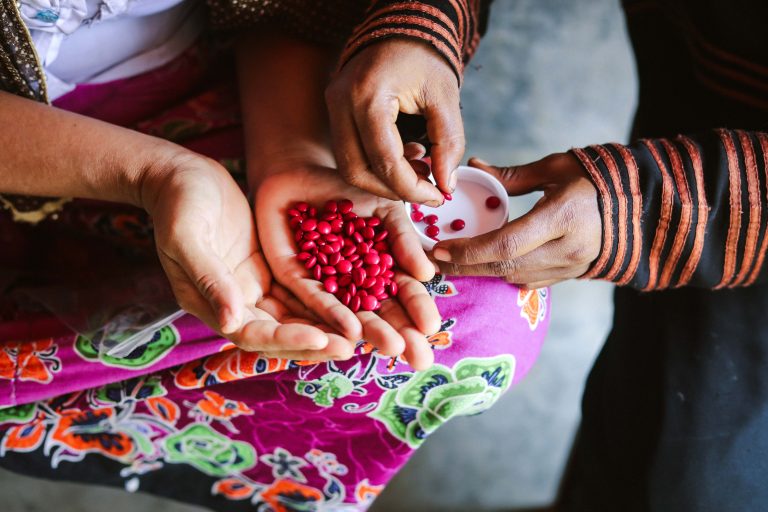
The world’s largest community of humanitarian translators
Translators without Borders (TWB) brings together a global community of over 100,000 language volunteers who provide language services to humanitarian and development organizations worldwide. Together we’re helping people get vital information and be heard, whatever language they speak. Community members make a real-world impact by contributing to the development of glossaries, chatbots, voice recordings, and subtitled videos to support their language communities.
Our language services include written and audio translation, terminology support, pictorial messaging, plain language review, sign languages, and a host of associated language services. Our community translates over twenty million words each year to increase access to information and include more marginalized language speakers in conversations that matter to them.
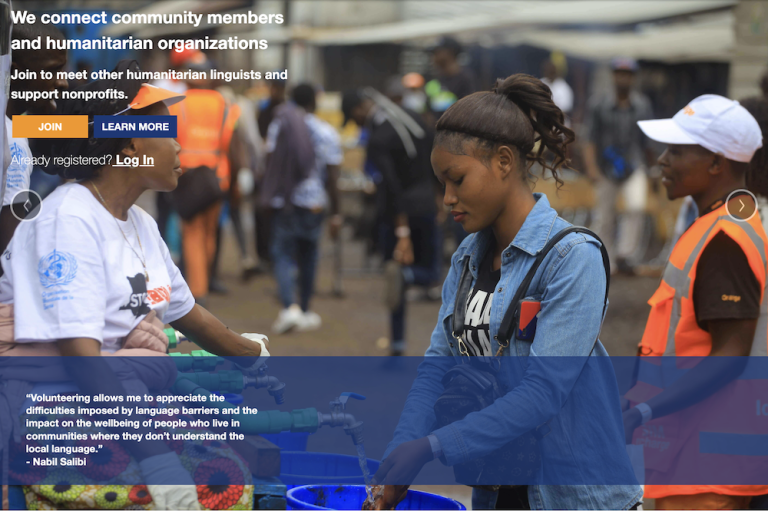
To highlight some projects:
– Kinyarwanda community members translated and recorded 120,000 sentences for the MT Rwanda project, and our experts developed a tool to capture text data that can be used for building future machine translation models;
– Working with community-based organizations in Venezuela, we developed a glossary in three Indigenous languages to improve two-way communication with marginalized Indigenous communities on recognizing and reporting sexual abuse;
– In northeast Nigeria, our community translated over 84,000 words and 130 visuals to distribute clearer messaging and improve accountability to affected people. We also conducted research and a user-centered design process to build a chatbot for community leaders to ask questions and answer community concerns quickly.
These diverse language services are making humanitarian responses more effective, with localized information in languages and formats that affected people use and understand.
While the TWB Community keeps growing, we’re focused on growing our reach and improving mother language access for marginalized groups. We’re building capacity for language communities and nonprofit partners to make innovative technology, information, and resources available to people’s mother languages. Our practical tools and guides, translated for different contexts, help linguists and humanitarian and development professionals work together more effectively so we can unlock the potential for everyone to get and share vital knowledge. To support our volunteers, we’ve created the TWB Learning Center. This free online platform has already welcomed over 30,000 users to learn about humanitarian translation and gain essential language industry skills. You can learn more about how TWB Community works and read insights from community members on the TWB Blog.
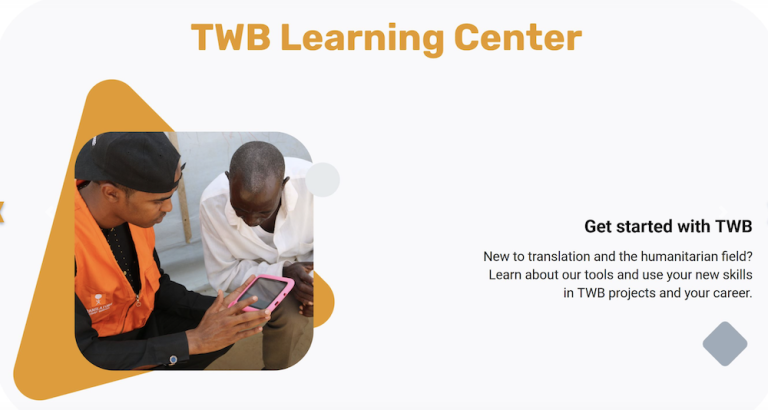
The internet – a tool for everyone?
There are an estimated 7,000 living languages globally, but only 5% are online. For people forced to build lives away from home, education – and the opportunities it brings – are often out of reach. UNESCO found that “not being able to speak the host country language is one of the main barriers which prevent forcibly displaced people from participating in host countries’ formal education systems.” With the growing prevalence of AI tools and machine translation, you might be wondering, what’s stopping us from making the internet truly multilingual?
According to recent research, “Technology increases access mostly to those who already have it.” So what about everyone without access, especially those on the move, people in remote places or devastating circumstances? To compound the issue, “Technology can reinforce gender, language and cultural inequality in content production” since privileged groups dominate creation. “A study of higher education repositories with open educational resource collections found that nearly 90% were created in Europe or North America, and 92% of the material in the Open Educational Resources Commons global library is in English, which influences who can use such content.” To make the internet a tool for everyone, need to make online educational resources available in diverse languages, localize them to meet people’s needs in different contexts, and ensure they’re accessible to all.
It’s time the internet speaks everyone’s language.
– Multilingual conversational chatbots, glossaries and online resources that scale access to information and combat disinformation in the Democratic Republic of Congo, Bangladesh, northeast Nigeria, Ukraine, Türkiye and Syria, and more.
– Voice-enabled interactive information tools in low-literacy and low-connectivity contexts, and a Language AI Playbook to help technology reach more people. A pilot project in India supported farmers to adopt sustainable farming practices by enabling users to ask questions and receive audio and visual responses in their language.
– Kompas, a multilingual AI gateway, curates and verifies up-to-date information from reliable sources for people impacted by the war in Ukraine.
– Machine translation in low-resource languages, including in Kinyarwanda, to improve the use of machine translation in public sector education in Rwanda, to support Tigrinya-speaking refugees in Europe, and Levantine Arabic to improve information collection for Syrian refugees.

User experience matters
As humanitarian and development organizations turn to technology to reach more people, digital tools like apps must be designed with users’ needs in mind. For refugees and migrants resettling in Canada, for example, there’s an app to help people make informed decisions about support services, travel and housing, and integrate successfully. IOM’s O-Canada Mobile app provides relevant, accurate and timely information in eight languages. The challenge: making sure it works for marginalized groups, with different languages, cultures and backgrounds to consider. So we partnered with IOM, and CLEAR Global’s experts and tested the app’s usability with Arabic, Dari, Kiswahili, Somali, and Tigrinya speakers, to produce a report and recommendations on how to make a good user experience more inclusive.
Insights into language use are critical
Multilingual technology can help us reach more people, especially when we have data on people’s language use and preferences to inform inclusive solutions.
– Our language mapping provides interactive, operational language data to help organizations develop more inclusive communication strategies and analyze vulnerability factors.
– Our Global Language Data Review – the only resource of its kind – assesses language data quality for 88 priority countries for humanitarian and development assistance.
– We strengthen the sector’s capacity to understand, collect and use this language data through a mix of pre-translated questions and data tools to improve needs assessments.
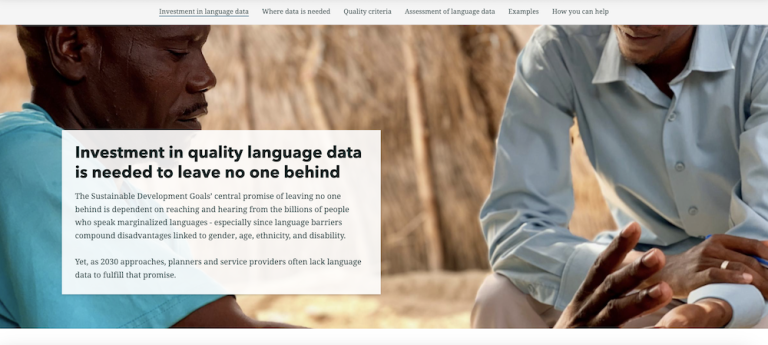
When it comes to multilingual app design, translation is important, but good localization is crucial as well. We must consider languages that are aligned right-to-left, question our assumptions about users’ language use and preferences, and test apps with marginalized groups, so their valuable insights can be incorporated. Explore the full report for insights on user-centered multilingual app design.
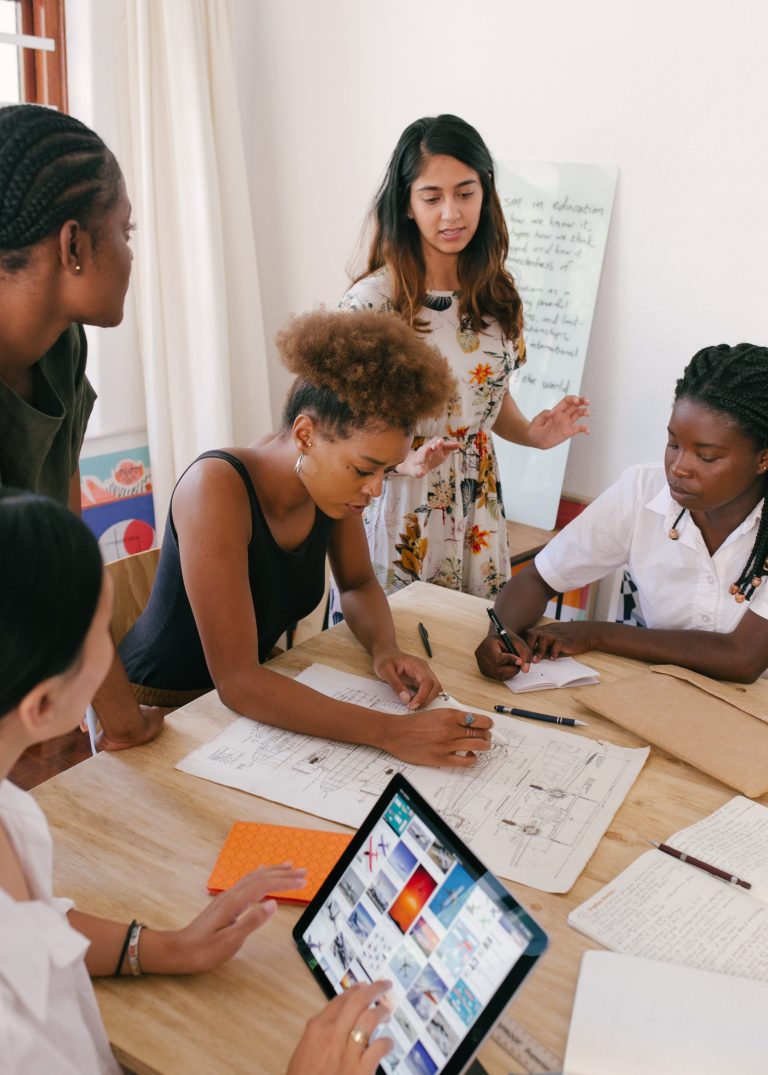
How we can multiply our impact
CLEAR Global calls on the humanitarian, development and technology worlds to embrace language diversity – and leave no language speaker behind. With the transformative power of language technology, we can create a more inclusive and informed global community. When programs, services and resources are accessible in the languages people use, it helps ensure no one is left behind. Learn more about our movement to start Four Billion Conversations, address the digital divide and change the way the world communicates (hint: more fairly!) We envision a world where every voice is heard, and every language matters; where equal access to education, health and climate change information are a reality for all.
– Learn more about CLEAR Global’s initiatives and partnerships on the blog.
– Promote language inclusion in your community.
Get Involved:
– Join our subscribers list for exclusive updates and opportunities to get involved.
– Become a partner or sponsor CLEAR Global and help us amplify our impact worldwide.
– Follow us on social media to stay updated and share your stories
#MyMotherLanguage #LanguageInclusion
Written by Danielle Moore, Communications Officer, CLEAR Global